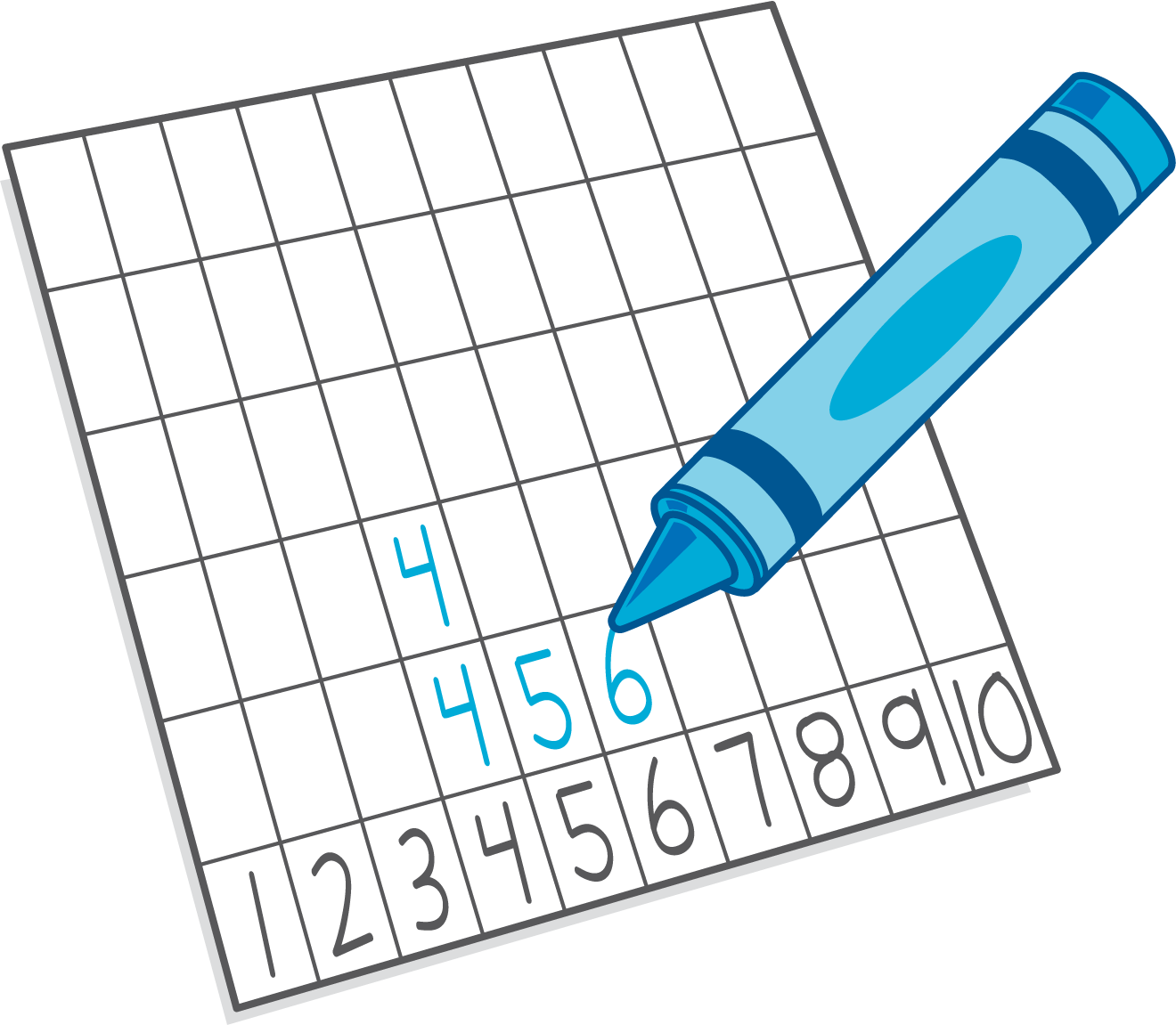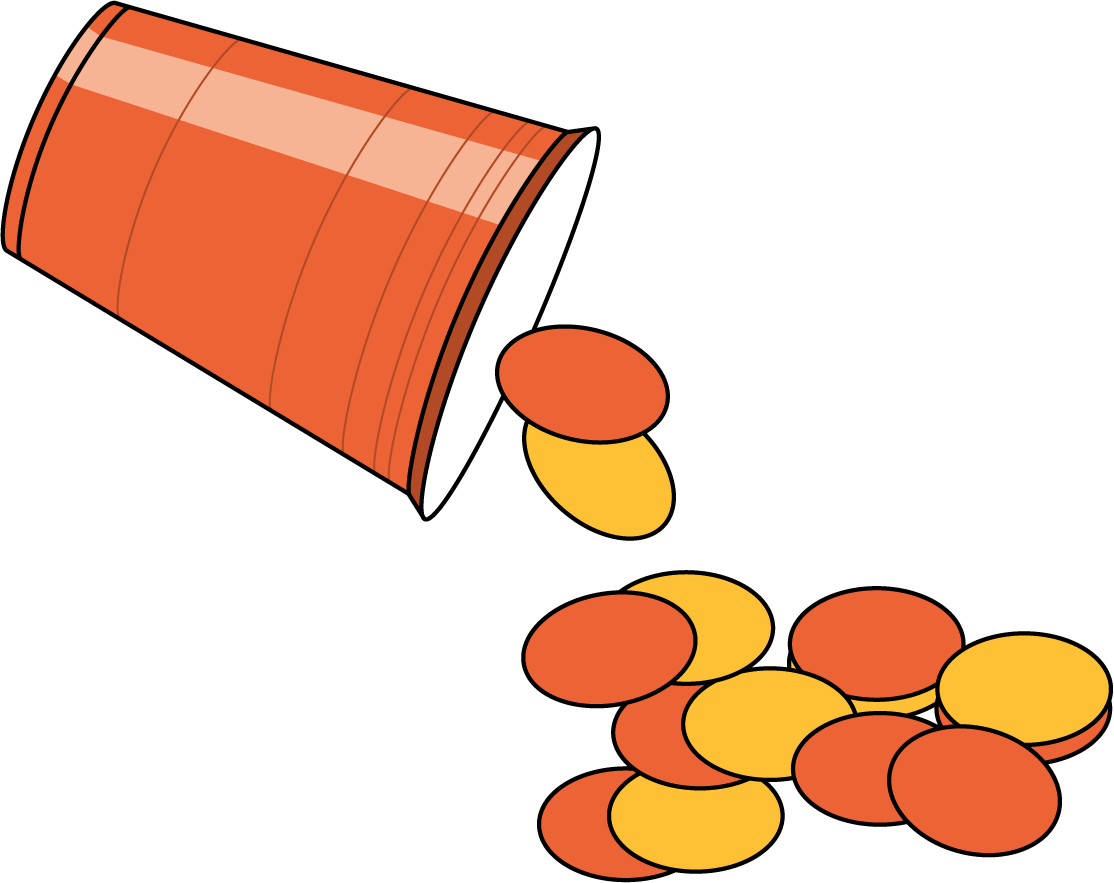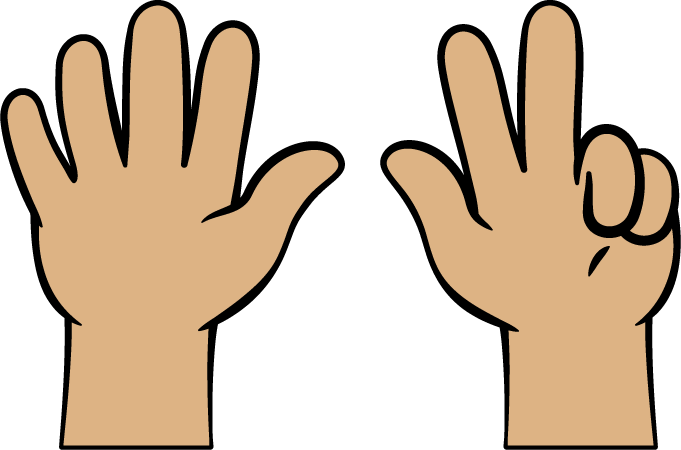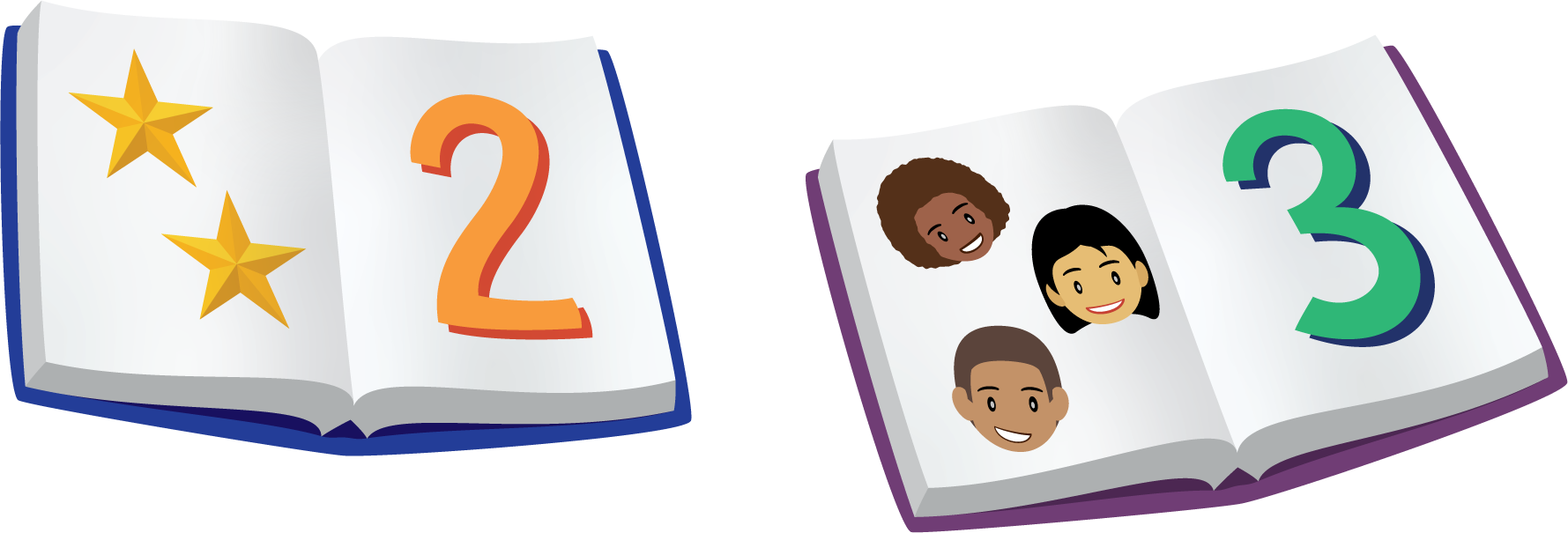Lesson 3
Groups that Look Very Different
Warm-up: Choral Count: Represent with Fingers and Numbers (10 minutes)
Narrative
The purpose of this warm-up is for students to practice the verbal count sequence to 10 and show quantities on their fingers.
Launch
- “Count to 10 with your fingers. Each time you say a number, put up 1 finger.”
- Count to 10 as a class using fingers.
Activity
- “As you count and put up your fingers, I will write the numbers.”
- Write numbers 1–10 as students count and put up their fingers.
Student Response
For access, consult one of our IM Certified Partners.
Activity Synthesis
- Point to “3” and say “Hold up 3 fingers.”
- Repeat with 5, 6, and 10.
Activity 1: More or Fewer Pattern Blocks (10 minutes)
Narrative
The purpose of this activity is for students to compare the number of objects in groups with very different quantities. Because the quantities are very different, students should be able to visually tell which group has more objects. Students may also match or count each group to compare.
Advances: Listening, Speaking
Required Materials
Materials to Gather
Required Preparation
- Each group of 2 needs a bag with 8 to 10 green triangle pattern blocks and 1 to 3 orange square pattern blocks.
- 6 connecting cubes and 2 pattern blocks needed for display.
- 8 orange square pattern blocks and 2 green triangle pattern blocks needed for display.
Launch
- Groups of 2
- Display a group of 6 connecting cubes and a group of 2 pattern blocks.
- “What do you notice? What do you wonder?”
- 30 seconds: quiet think time
- 1 minute: partner discussion
- Share responses.
- “We noticed that there are more connecting cubes than pattern blocks. That means there are fewer pattern blocks than connecting cubes. We are going to continue looking at groups of objects to see which group has more and which has fewer.”
Activity
- Give each group of students a bag of pattern blocks.
- “Take the pattern blocks out of your bag. Are there more orange squares or green triangles?”
- 30 seconds: quiet think time
- 30 seconds: partner discussion
- “How do you know if there are more orange squares or more green triangles?”
- Share responses.
- “Figure out and tell your partner how many orange squares you have. Then figure out how many green triangles you have.”
- 2 minutes: partner work time
- “Switch your bag of objects with another group.”
- Repeat the steps above, asking “Are there fewer...?” instead of “Are there more...?”
Student Response
For access, consult one of our IM Certified Partners.
Activity Synthesis
- Display 8 orange square pattern blocks and 2 green triangle pattern blocks.
- “Are there fewer orange squares or green triangles? How do you know?” (There are fewer green triangles. We can just see that there are a lot of orange squares and only 2 green triangles.)
- “There are fewer green triangles than orange squares. How many green triangles are there?”
- Demonstrate or invite a student to demonstrate moving or touching each triangle as the class counts.
- Repeat the steps with the orange squares.
- “There are more orange squares than green triangles. 8 is more than 2. There are fewer green triangles than orange squares. 2 is less than 8.”
Activity 2: Create Groups with More and Fewer (10 minutes)
Narrative
The purpose of this activity is for students to make groups with more or fewer objects than a given group of objects. When asking students to make a group that has more objects than the given group, the given group will have very few objects. Similarly, when asking them to make a group that has fewer objects than the given group, the given group will have many objects. This should allow students to create and compare the groups visually. In a future lesson, students will create groups with more or fewer objects than a given group when the quantities are closer, where it will be helpful for students to match or count the objects in each group.
Required Materials
Materials to Gather
Required Preparation
- Each group of 2 needs a bag of green triangle and orange square pattern blocks from the previous activity.
Launch
- Groups of 2
- Give each group of students a bag of 8–10 green triangle pattern blocks and a bag of 1–3 orange square pattern blocks.
Activity
- “Make a group with counters that has more than the group of orange squares.”
- 30 seconds: quiet think time
- 1 minute: partner work time
- “Figure out and tell your partner how many counters you have. Then figure out and tell your partner how many orange squares you have.”
- 2 minutes: partner work time
- “Make a group with counters that has fewer than the group of green triangles.”
- 30 seconds: quiet think time
- 1 minute: partner work time
- “Figure out and tell your partner how many counters you have. Then figure out and tell your partner how many green triangles you have.”
- 2 minutes: partner work time
Activity Synthesis
- Invite 2–3 students to share the groups of counters that they made that have fewer than the green triangles.
- “What is the same about the groups they made? What is different?” (They all made groups with different numbers of counters. They all have fewer than the green triangles.)
Activity 3: Introduce Number Race, Numbers 1–10 (25 minutes)
Narrative
The purpose of this activity is for students to learn stage 1 of the Number Race center. Students practice recognizing and writing numbers as they roll a connecting cube onto the mat and trace the number that it lands on. If students do not yet recognize each number, they can match the symbol on the number mat to the symbol on the recording sheet. Students continue rolling and tracing until one number "wins" (all of the numbers in the column are traced). After students have traced all of one number, they can finish tracing the rest of the numbers. Students can use different colors or writing utensils during this center. In a future variation of this center, students will write the numbers instead of tracing them.
After they participate in the center, students choose from any stage of previously introduced centers.
- Shake and Spill
- Math Fingers
- Pattern Blocks
- Picture Books
Supports accessibility for: Social-Emotional Functioning, Organization
Required Materials
Materials to Gather
Materials to Copy
- Number Mat 1-10
- Number Race Stage 1 Recording Sheet for Tracing
Required Preparation
- Each group of 2 needs 1 connecting cube.
- Gather materials from:
- Shake and Spill, Stage 1
- Math Fingers, Stage 1
- Pattern Blocks, Stages 1-3
- Picture Books, Stages 1 and 2
Launch
- Groups of 2
- Give each student a recording sheet. Give each group of 2 students a number mat and a connecting cube. Give students access to colored pencils, crayons, or markers.
- “We are going to learn a new center called Number Race. Let's play a round together.”
- “I am going to roll the cube onto the number mat. Which number did the cube land on?”
- 30 seconds: quiet think time
- Share responses.
- “Now I find that number on the recording sheet and trace the number at the bottom.”
- Demonstrate tracing the number the cube landed on.
- “Take turns with your partner. During each turn, roll the cube and trace the number on the recording sheet. Play until you’ve traced all of one number. That number is the winner.”
Activity
- 5 minutes: partner work time
- “Now you can choose another center. You can also continue playing Number Race.”
- Display the center choices in the student book.
- Invite students to work at the center of their choice.
- 10 minutes: center work time
- If time, invite students to choose another center.
Student Facing
Choose a center.
Number Race

Shake and Spill

Math Fingers

Pattern Blocks

Picture Books

Activity Synthesis
- “When you played in centers with a partner, how did you decide who gets to go first? What would you do if you wanted to go first but your partner wanted to go first too?”
Lesson Synthesis
Lesson Synthesis
“Today we compared the number of objects in groups. We figured out which group had more objects and which group had fewer objects.”
Display 10 red counters and 3 yellow counters.
“Are there fewer yellow counters or red counters? How do you know?”
“We can just see that there are a lot of red counters and only a few yellow counters. There are fewer yellow counters than red counters. There are more red counters than yellow counters.”
“Let's figure out how many red counters there are.”
Point to each red counter as students count or invite a student to count.
“There are 10 red counters.”
Repeat the steps with the yellow counters.
“There are 3 yellow counters.”
“There are fewer yellow counters than red counters. 10 is more than 3. 3 is less than 10.”
Cool-down: Unit 2, Section A Checkpoint (0 minutes)
Cool-Down
For access, consult one of our IM Certified Partners.